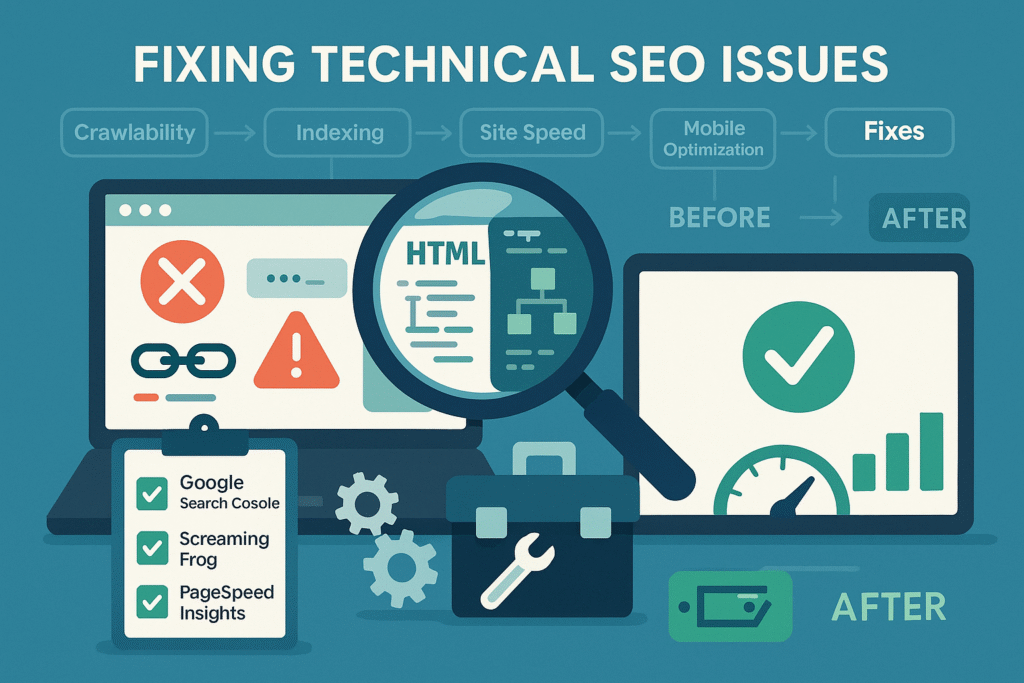In the dynamic world of search engine optimization (SEO), maintaining a website’s visibility and ranking is paramount. However, websites can sometimes experience sudden drops in traffic and rankings due to penalties imposed by search engines like Google. These penalties can be either algorithmic or manual, each requiring a distinct approach for resolution. This comprehensive guide delves into the intricacies of SEO penalty cleanup, offering insights into identifying, addressing, and preventing such penalties to restore and enhance your website’s performance.
Table of Contents
Understanding SEO Penalties
What Are SEO Penalties?
SEO penalties are sanctions imposed by search engines when a website violates their guidelines. These penalties can lead to decreased visibility, lower rankings, or even removal from search results. Penalties are categorized into two types: algorithmic and manual.
Algorithmic Penalties
Algorithmic penalties are automated actions taken by search engine algorithms when they detect violations of guidelines. Common causes include:
- Thin Content: Pages with little or no valuable information.
- Duplicate Content: Identical or very similar content across multiple pages.
- Keyword Stuffing: Overuse of keywords to manipulate rankings.
- Cloaking: Showing different content to users and search engines.
- Spammy Backlinks: Links from low-quality or irrelevant websites.
These penalties often result from updates to search engine algorithms, such as Google’s Panda or Penguin updates.
Manual Actions
Manual actions are penalties applied by human reviewers at search engines when they determine that a website has violated guidelines. Common reasons include:
- Unnatural Links: Links intended to manipulate PageRank.
- User-Generated Spam: Spammy content in comments or forums.
- Cloaking and Sneaky Redirects: Deceptive practices to mislead users or search engines.
- Hidden Text or Keyword Stuffing: Using hidden text or excessive keywords.
- Structured Data Issues: Misuse of schema markup.
Manual actions are communicated through Google Search Console, providing details about the violation and steps to resolve it.
Identifying SEO Penalties
Signs of a Penalty
Detecting an SEO penalty involves monitoring various indicators:
- Sudden Drop in Traffic: A significant decrease in organic traffic.
- Lower Rankings: Pages ranking lower or disappearing from search results.
- Indexing Issues: Pages not being indexed or removed from the index.
- Manual Action Notifications: Messages in Google Search Console indicating a manual penalty.
Differentiating Between Algorithmic and Manual Penalties
- Algorithmic Penalties: No direct notification; identified by correlating traffic drops with known algorithm updates.
- Manual Actions: Explicit notifications in Google Search Console detailing the issue.
SEO Penalty Cleanup Process
1. Conduct a Comprehensive Site Audit
Begin by performing a thorough audit to identify potential issues:
- Content Quality: Assess for thin, duplicate, or low-quality content.
- Backlink Profile: Analyze for unnatural or spammy backlinks.
- Technical SEO: Check for crawl errors, broken links, and site speed issues.
- User Experience: Evaluate mobile-friendliness and overall usability.
2. Address Content Issues
Enhance your website’s content by:
- Removing or Improving Thin Content: Add valuable information to underperforming pages.
- Eliminating Duplicate Content: Use canonical tags or rewrite content to ensure uniqueness.
- Avoiding Keyword Stuffing: Integrate keywords naturally within the content.
3. Clean Up Backlinks
Manage your backlink profile to remove harmful links:
- Identify Toxic Links: Use tools like Google Search Console to find unnatural backlinks.
- Request Removal: Contact webmasters to remove harmful links.
- Disavow Links: Use Google’s Disavow Tool to ignore links that can’t be removed.
4. Fix Technical SEO Issues

Ensure your website is technically sound:
- Resolve Crawl Errors: Fix broken links and ensure proper redirects.
- Improve Site Speed: Optimize images and leverage browser caching.
- Enhance Mobile Usability: Ensure responsive design and fast loading on mobile devices.
5. Submit a Reconsideration Request (For Manual Actions)
If you’ve received a manual action:
- Document Your Efforts: Keep records of all corrective actions taken.
- Submit a Reconsideration Request: Explain the issues addressed and steps taken to comply with guidelines.
- Await Response: Google will review your request and notify you of the outcome.
Preventing Future Penalties
Adhere to Webmaster Guidelines
Regularly review and comply with Google’s Webmaster Guidelines to avoid violations.
Maintain High-Quality Content
Focus on creating original, valuable, and user-centric content that meets the needs of your audience.
Build Natural Backlinks
Earn backlinks organically through high-quality content and genuine outreach efforts.
Monitor Your Website Regularly
Use tools like Google Search Console and analytics platforms to monitor your site’s performance and detect issues early.
Conclusion
SEO penalty cleanup is a critical process for restoring and maintaining your website’s visibility in search engine results. By understanding the types of penalties, identifying issues promptly, and implementing corrective measures, you can recover from penalties and safeguard your site against future infractions. Consistent adherence to best practices and ongoing monitoring are essential for long-term SEO success.
Frequently Asked Questions (FAQ)
Q1: How long does it take to recover from an SEO penalty?
Recovery time varies depending on the type and severity of the penalty. Manual actions can take a few weeks to resolve after submitting a reconsideration request, while algorithmic penalties may take longer, depending on when the search engine updates its algorithms.
Q2: Can I recover from a penalty without professional help?
Yes, with a thorough understanding of SEO practices and guidelines, it’s possible to address penalties independently. However, seeking professional assistance can expedite the process and ensure a comprehensive resolution.
Q3: How can I prevent future SEO penalties?
Regularly audit your website, adhere to search engine guidelines, produce high-quality content, and build natural backlinks. Staying informed about SEO best practices and algorithm updates is also crucial.
Q4: What tools can help in identifying and fixing SEO penalties?
Tools like Google Search Console, Google Analytics, and various SEO auditing tools can help identify issues. These platforms provide insights into website performance, backlink profiles, and potential violations.
Q5: Are all drops in traffic due to penalties?
Not necessarily. Traffic fluctuations can result from various factors, including algorithm updates, seasonal trends, or changes in user behavior. It’s essential to analyze the root cause before concluding a penalty has occurred.



